Table of Contents
Summary
» Country? Thailand.
» In a few words, what is the idea? The Isaan region is located in northeastern Thailand. It does not have the international recognition of other destinations in Thailand, but in return it is more authentic and welcoming. Singular temples, ancient cities, beautiful landscapes, genuine traditions and, above all, hospitable people who make you feel welcome from the first second.
» Duration? We suggest at least 3 nights / 2 full days.
» For whom? Travellers whose priority is personal contact with locals, those who don’t afraid to miss more famous sites, who like to improvise and be surprised.
» Where? Isaan region.
» When? Al year long, but we recommend, if possible, try to take advantage of any local celebration.
Description
Where and What is Isaan like?
Isaan is a region of Thailand located in the northeast of the country on the Khorat plateau with 155.000 square kilometres of extension, approximately England plus Wales in Great Britain. The mythical Mekong river marks off the border with Laos at the eastern end, while in the south is the People’s Republic of Cambodia.
It is part of Thailand since the 18th century and the treaties with the French government of the late 19th century and early 20th set in Isaan the Thai borders with French Indochina.
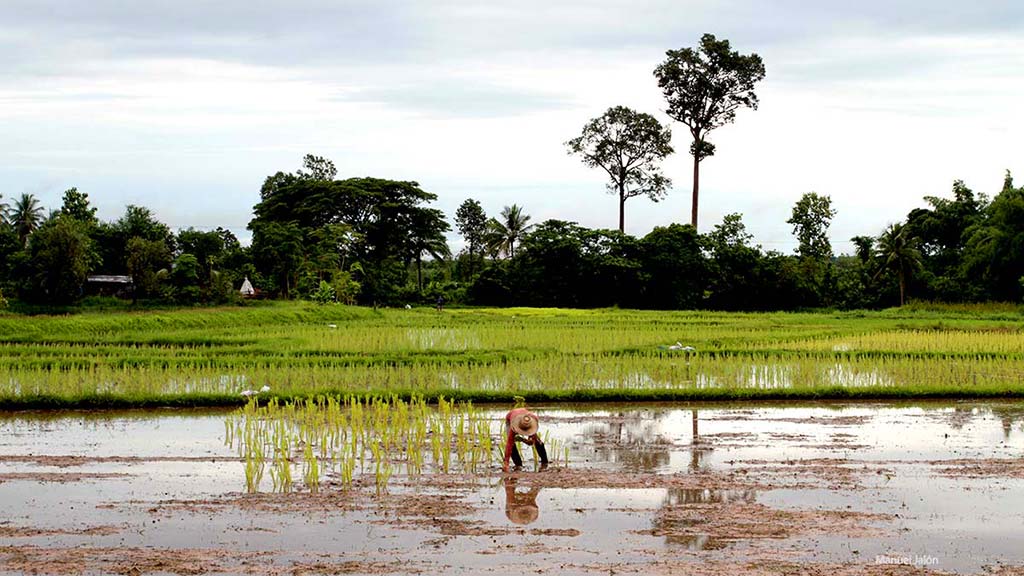
Neither for historical reasons nor by its natural wealth Isaan was a prominent leader in the past, unlike other regions such as the basin of the Chao Phraya river, and that is precisely one of its charms.
The fluid contact with the neighbours of Laos and its proximity to the Khmer Empire of Angkor in the 11th and 12th centuries have given rise to a rich cultural heritage.
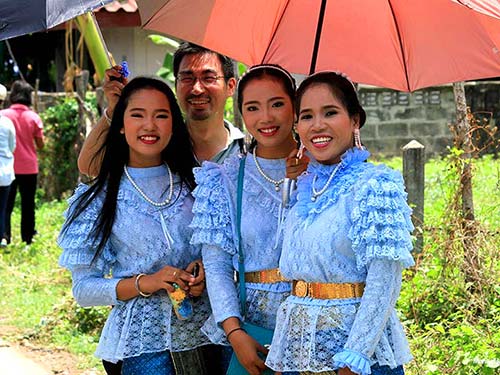
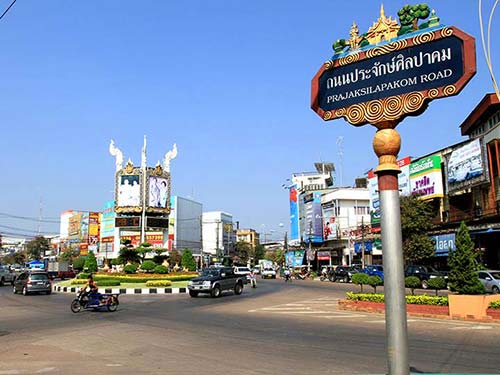
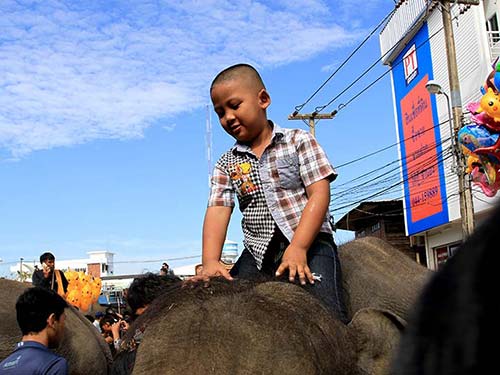
On the other hand, the autarchic way of life remained until the mid-twentieth century, a circumstance that nowadays can be noticed in the social life and the deep bond that they keep with nature and the spiritual tradition of Animism. This religion together with Buddhism order and explain here the meaning of life.
Therefore, including Isaan within your itinerary in Thailand will allow you to enjoy the hospitality of its dwellers in a family atmosphere, in which you will soon feel welcome and unique.
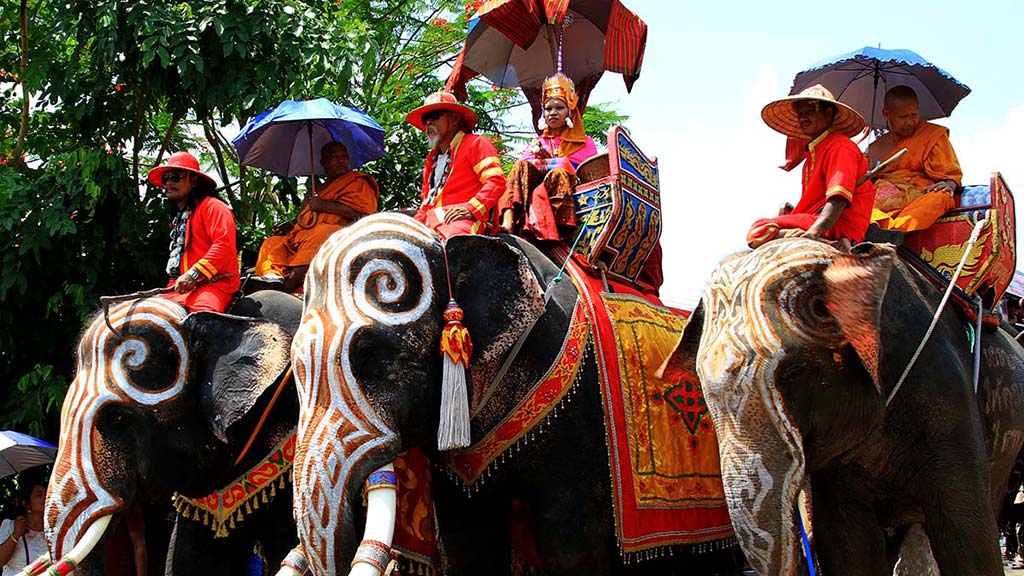
Also, enjoy the authentic traditional life, explore the suggestive universe of the religion of the spirits and admire its magnificent historical places and national parks.
Undoubtedly, visiting Isaan will enrich your trip to Thailand.
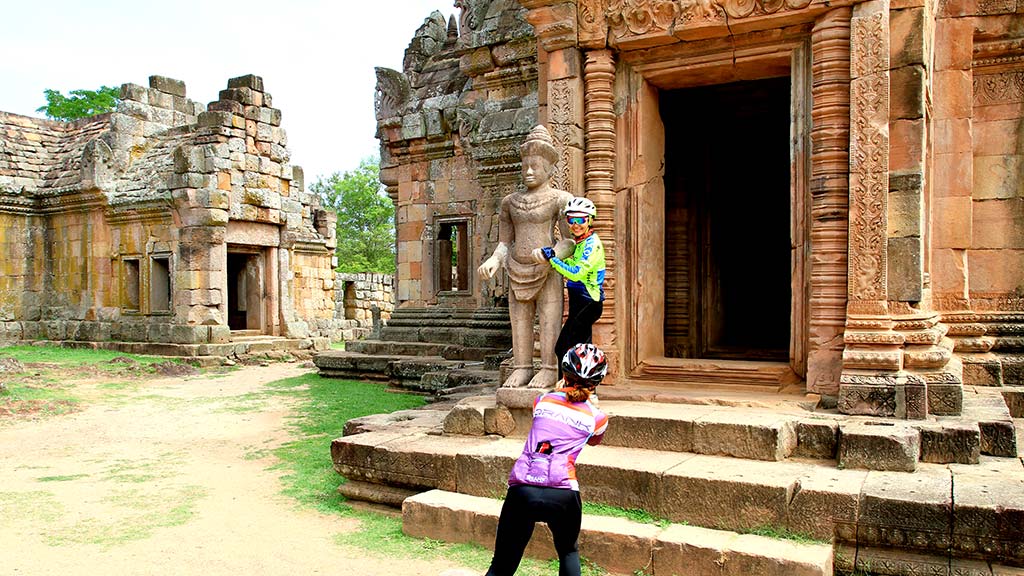
Isaan is a vast plain in which the rice fields spread to the horizon so that the staple harvest after each rainy season is crucial for the economy of its 21 million inhabitants.
Among other species, the aromatic jasmine rice grows here.
The beautiful mountains of Phetchabun draw the boundaries of the plains on the west side, with some areas are protected as national parks.
The rainy season runs from May to October when the weather is warm. Drought periods are frequent out of monsoons time as well as floods as a result of tropical rains.
About the culture and social life
The life in common following a pattern of cooperative land work and intense family life allows them to be more efficient in agricultural tasks and feel safer facing possible physical threats and those coming from evil spirits.
At the same time, although not always explicit, there is an abundance of social rules and a subtle control of behaviour, beginning with the beneficial influence of Buddhist monks, the advice of village leaders and the traditions embodied in the elders of the community, all of them very respected.
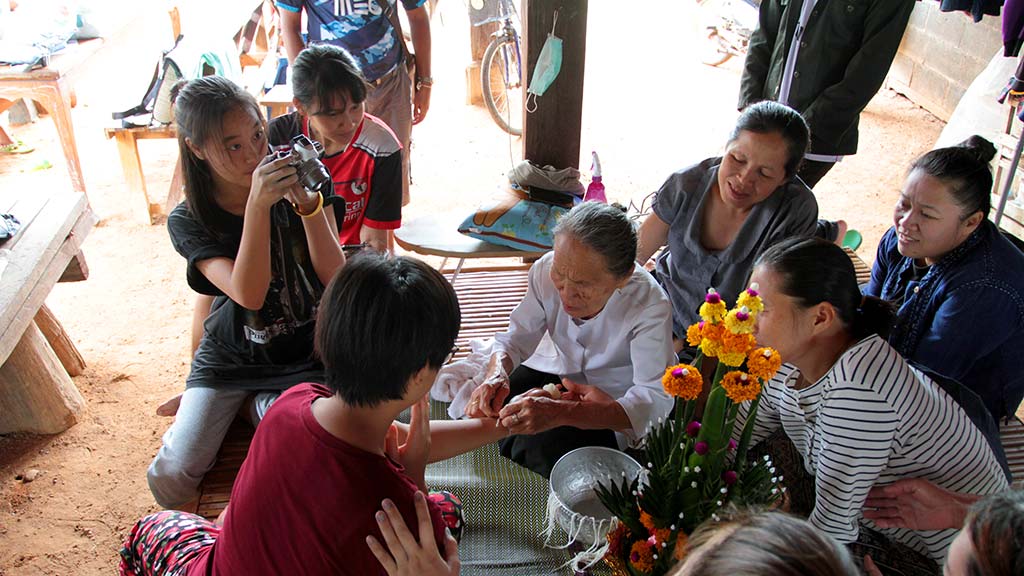
About the photo of Bai Si Su Kwan (above). Ceremony to welcome and honour the guests.
The matriarch of the family ties a sacred rope around the wrist of a girl who visits her house. Through this ritual, she provides strength and spiritual protection to this girl.
About the picture Jowpor Guan, animist celebration (next).
The protagonist of the image is the so-called Jowpor Guan, a wise man very respected by the community that plays the role of a medium. As such conveys to his neighbours the desires of the spirits and the same in reverse, he asks for the mediation of the spirits so that all the neighbours get the best response to their requests.
He wears a white band around his head while the neighbours ask him for help and tie a string around his wrist, making a donation.
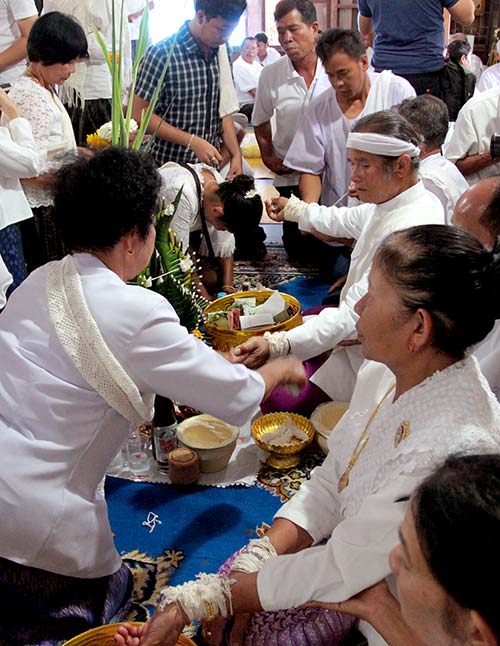
Isaan linguistic variety is linked to the Lao language and both are fundamentally understandable to each other. However, the Thai language of the central region has been promoted as an official language and it’s the one used in schools.
Fortunately, the perception of indigenous languages has changed in recent decades, as expressed by King Bhumibol in 1989: “Languages are a tool of humanity. They are a way to express opinions and are things of beauty, for example in the form of literature. It is necessary to carefully preserve languages”.
Almost any western traveller will notice a difference with his own country, the abundance of children, pure joy, a privilege of agricultural societies in which the family is the vital core.
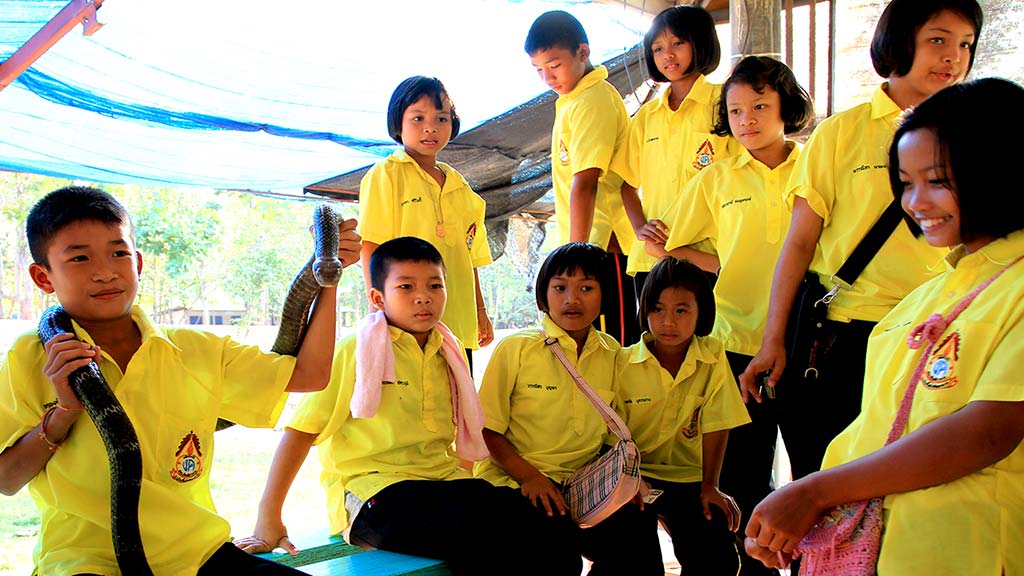
About the Northeastern cuisine just to say that it’s well known throughout the country. Its spicy papaya salad is a typical dish that should not be missed if you have culinary curiosity.
Most houses follow a similar design, raised on poles with an open ground floor. A solution to protect them against snakes and other wildlife, to cope with floods and which is also useful as a room for housing livestock.
During the day, it provides a comfortable shaded workroom for doing multiple household chores.
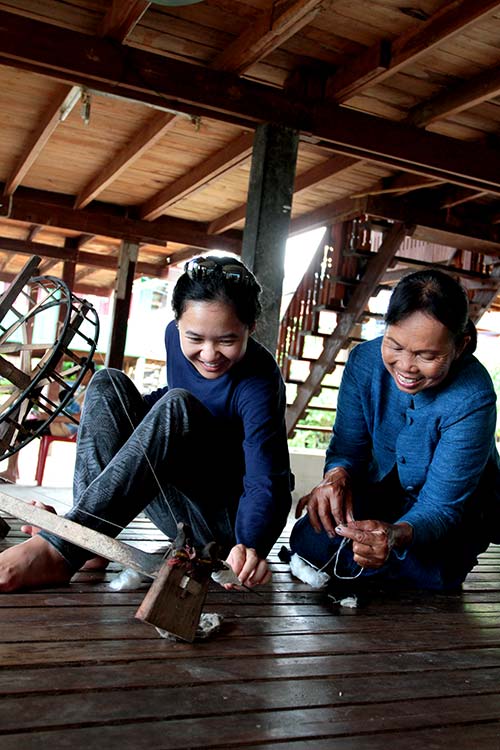
Where nature is still the Mother Earth
If we briefly review the daily life in the northeast of Thailand during an annual cycle of the 50s, we will understand the respect and gratitude of its people to Mother Nature, as well as fear of provoking the anger of the spirits that live there, who could disrupt its dynamic with fatal consequences.
The main rice crop was harvested after the end of the monsoons, that is to say, with the rains of May-June they began to plant rice and from October on it was time to harvest.
It might seem that then there was a lot of free time, but none of that, it is not like this. A self-sufficient economy is indeed demanding.
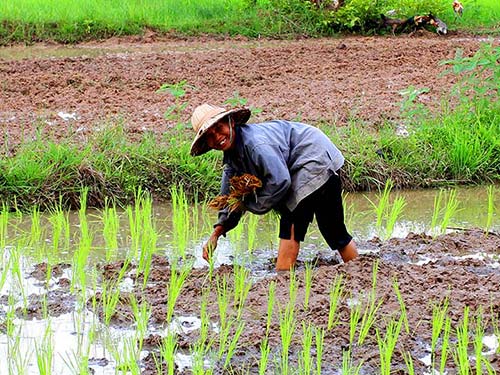
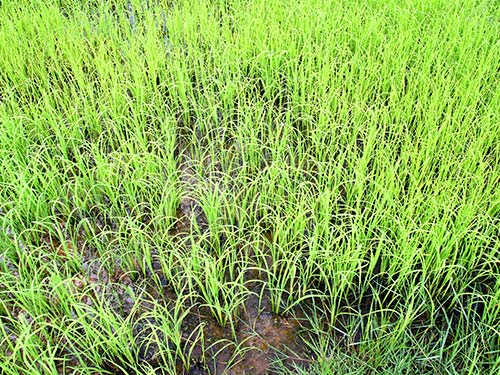
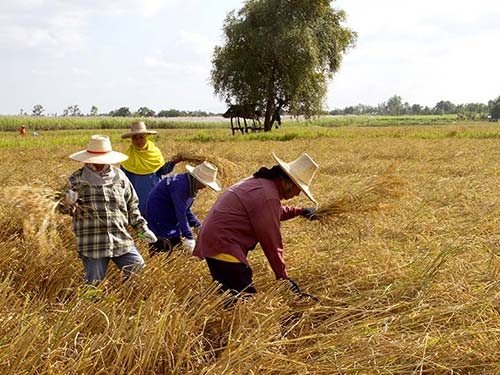
To begin with, there might be up to two new rice harvests in the lowlands, in those fields that maintain higher humidity, with more adapted species and logically lower yields.
The first months of the year they had to collect and process the salt for their own consumption, for barter or to earn some cash if there is any surplus.
It happened with many other products grown within family gardens, for example, tobacco, spices, garlic, onions and peppers. They dehydrated part of the harvest to consume out of season.
They had to get the supply of sugar cane and timber to make furniture and build or maintain the house. Weaving baskets and repairing paths after the rainy season. From snails also used the shells to produce food lime.
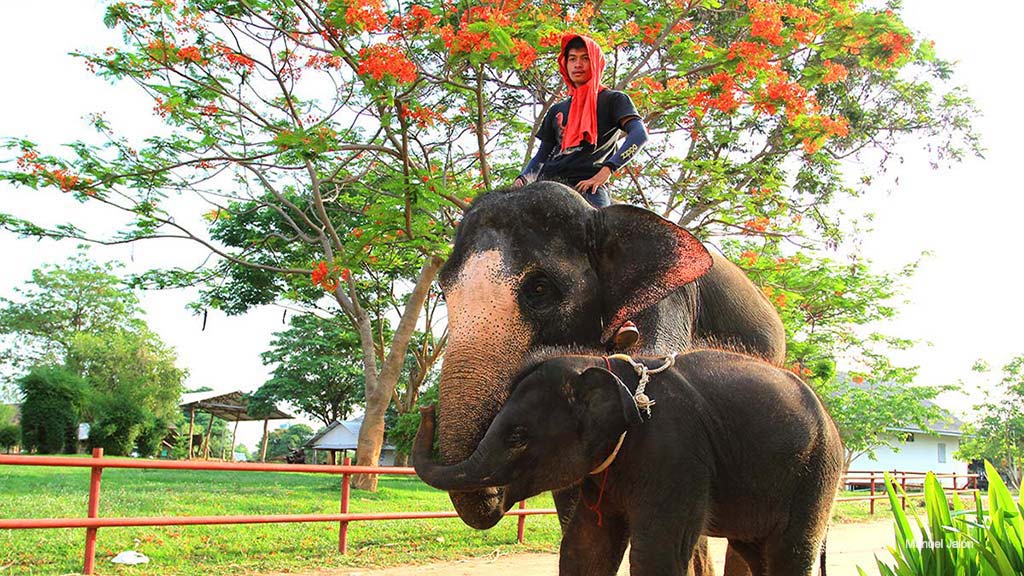
In the gardens, they also grew cucumbers, beans, watermelons, cotton and indigo as a textile dye. The cotton was harvested in February, and the cleaning, ginning, separation and spinning were carried out in the following months.
Some neighbours raised silkworms to provide this valued fabric.
Fishing all year round, which gave them the opportunity to prepare fermented fish sauce, a seasoning that is very popular in regional cuisine.

They also bred chicks and hens and, to lesser extent ducks, because they needed more care. The dwellers of Isaan had buffaloes to plough the fields and oxen to pull the carts.
There was a certain specialisation among the different labours, which means that all the villagers depended on each other to a much greater extent than when purchases are made in the supermarket, precisely the same happens with the natural environment.
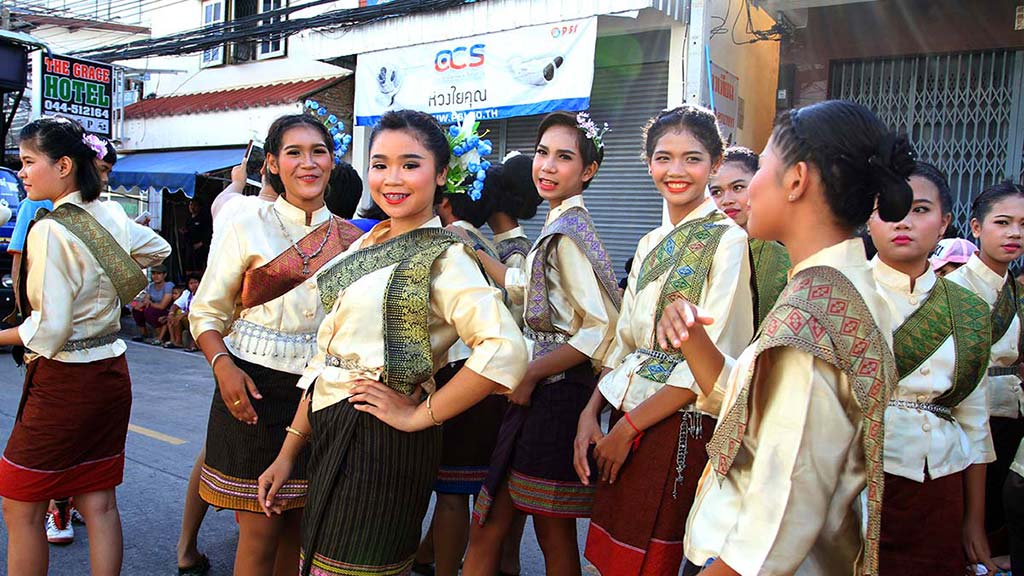
To illuminate the houses they made leaf torches with glutinous sap mixed with softwood and bark; all rolled into dry leaves.
To do so, they had to collect the sap, wood and bark before the rainy season starts.
Unlike the current production procedures, the traditional methods showed all transformations from the raw material to the final product ready to be consumed, people knew where they come from and they were aware that nature is generous but also has limits.
It’s a pleasant experience that is worth sharing.
An amazing cultural heritage, just some examples
Phanom Rhung Historical Park
The proximity of Cambodia made its influence great since the 10th century when the Khmer Empire of Angkor exerted its domain.
Today there are splendid remains like this temple in the province of Buri Ram.
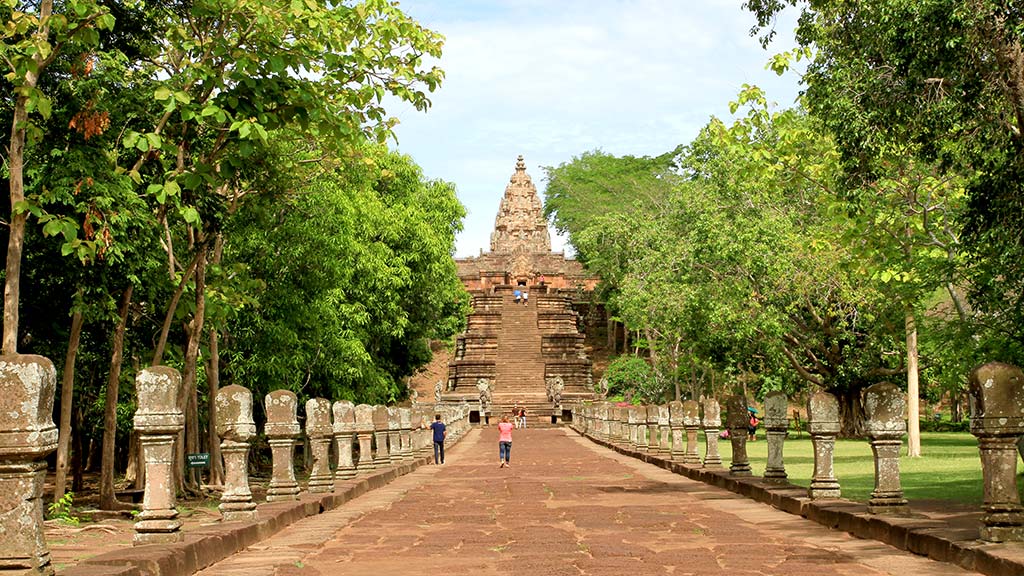
The historical remains are located on the hill of an ancient volcano 200 meters above the plain. Its temples are devoted to the Hindu god Shiva.
The most usual itinerary is that along with the beaches the stages of the trip are planned on the south/north axis: Bangkok – Chiang Rai.
Nevertheless, it may be a good idea to think about organising them on the east/west axis, for example, from Buri Ram to Chiang Mai and later to Mae Hong Son, close to Myanmar.
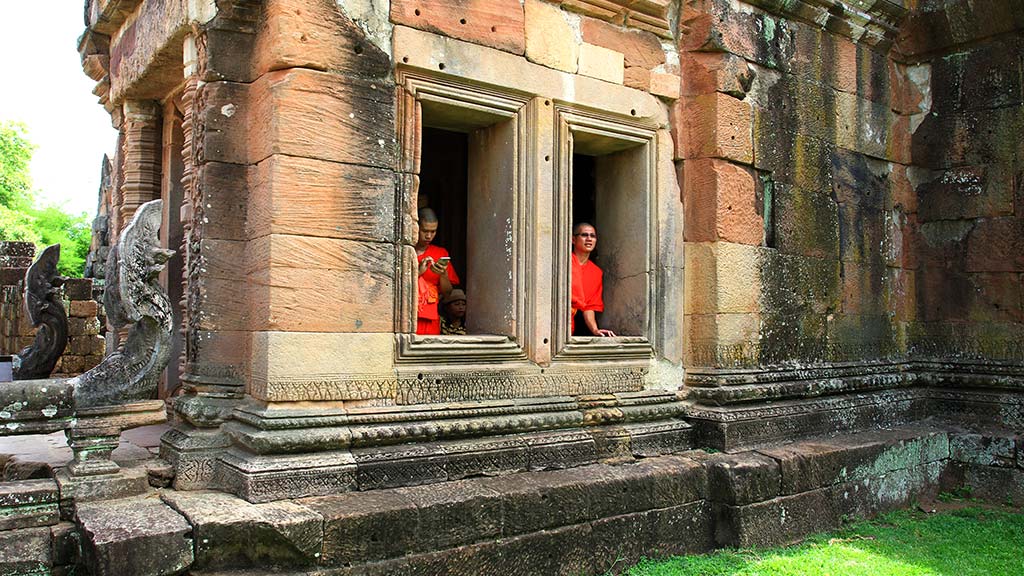
The styles of their Buddhist monasteries are clearly different from each other, what makes visits more interesting.
Cool celebrations in Surin
Surin keeps a special relationship with elephants and shares with them the three major festivals of the city, an excellent chance to visit Isaan.
» Parade of Buddhist novices riding elephants, in May.
It is a Thai tradition that young men are ordained as Buddhist monks for a period. A rite of passage to adulthood that improves their social esteem and for families is a source of pride. Novices ride elephants in a colourful parade.
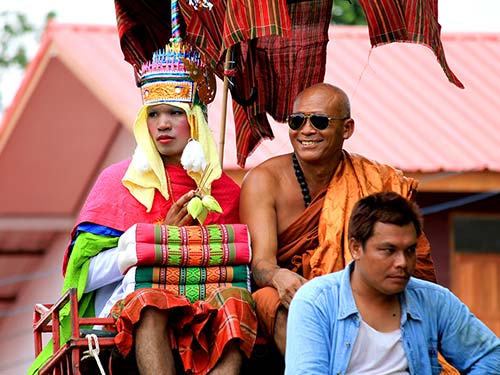
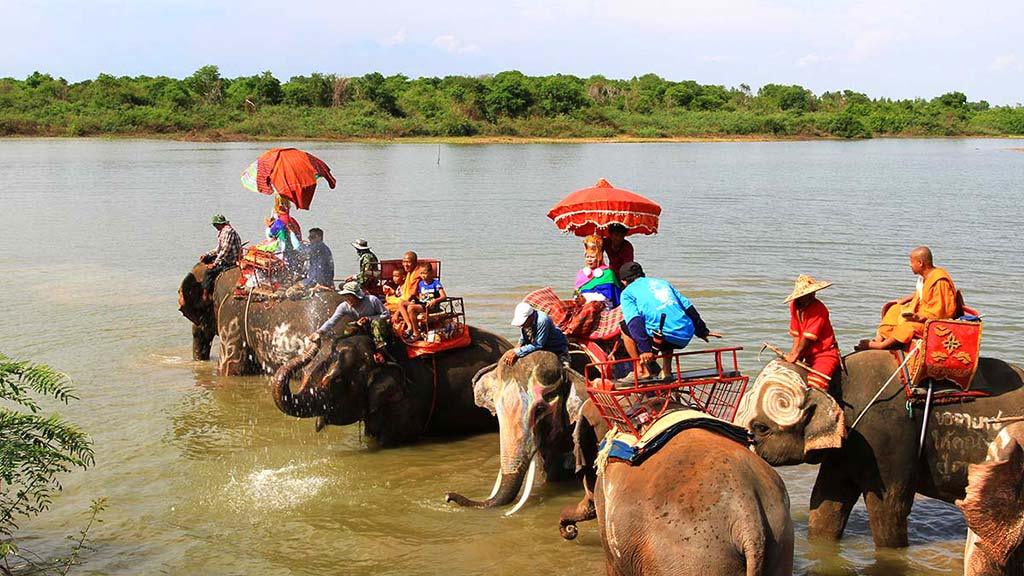
» Candle Festival in Surin, in July.
A few days before the beginning of Buddhist Lent (Pansa) the candle ceremony takes place in the temples, a tradition developed by a sermon of Buddha.
Offering light to the monks as a present is a valuable gesture among Buddhist believers, although over the time it has evolved to extend the range of gifts in the morning procession. They are actions of merit that show commitment to the support of the religious community.
It is also celebrated in Ubon Ratchathani.
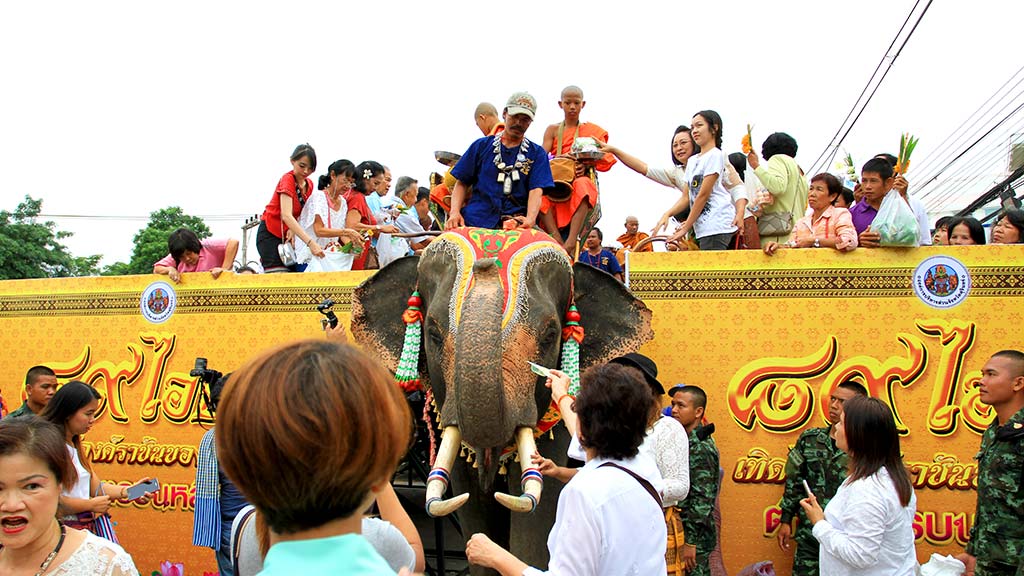
» Round-up and elephant show in Surin, in November.
More than a hundred elephants gather in a beautiful show to exhibit their skills along with the mahouts (coaches) and play epic battles of the ancient Kingdom of Siam.
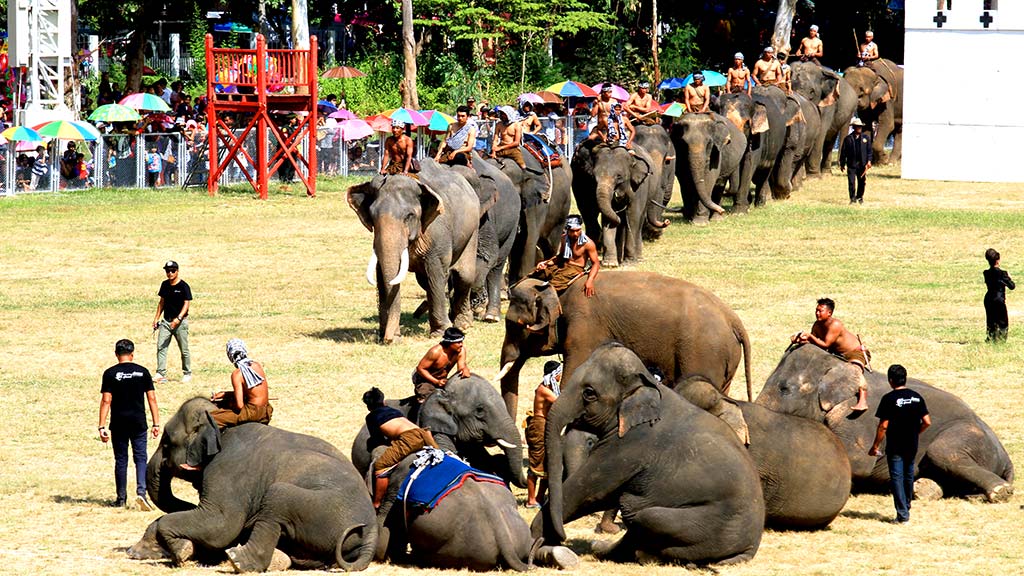
The Ghost Festival or Phi Ta Khon
Dan Sai, Loei, late May or June.
This celebration is included in the category of agricultural festivals, in this case at the beginning of the rainy season. Its name means ‘masked spirits‘. Even with this clear reference to the spirits’ world, the festival reenacts a scene from a previous life of Buddha, intertwining both beliefs.
The story is about the return of the Prince Vessantara to his city after years of exile. All villagers join the celebrations related to this happy event, as well as the spirits, who don’t want to miss such fun parties.

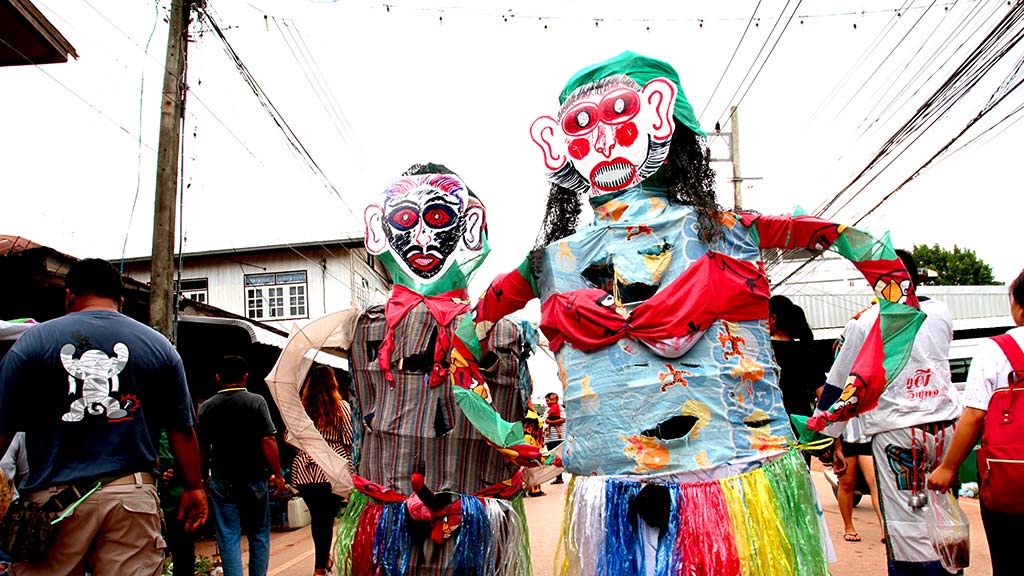
Thanks for sharing
Good article, thanks for sharing, please visit
our website